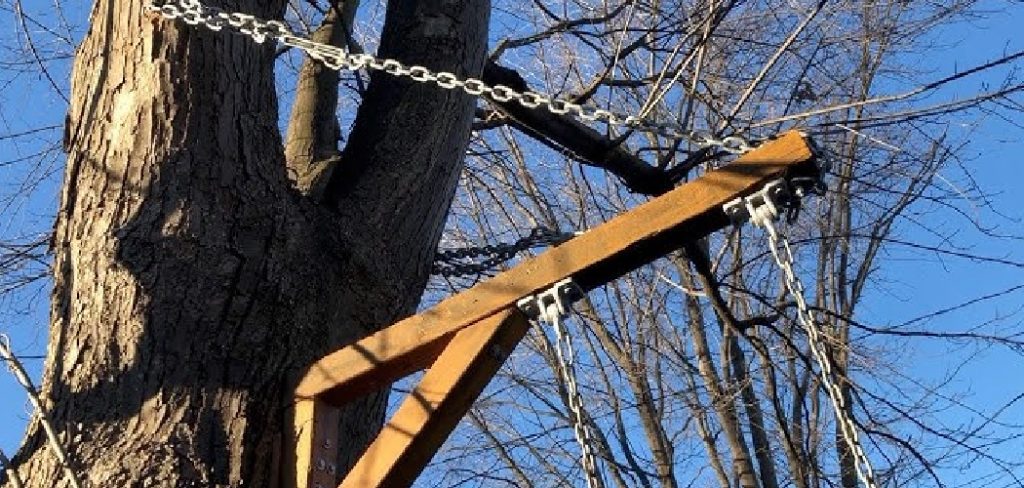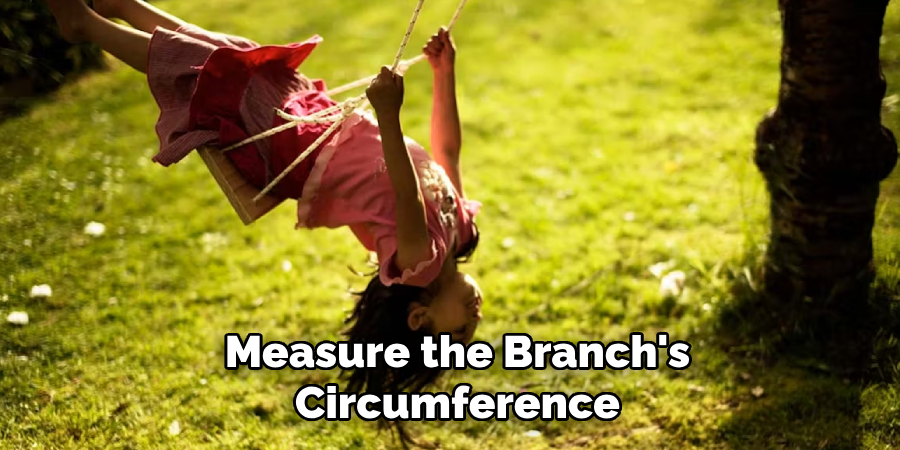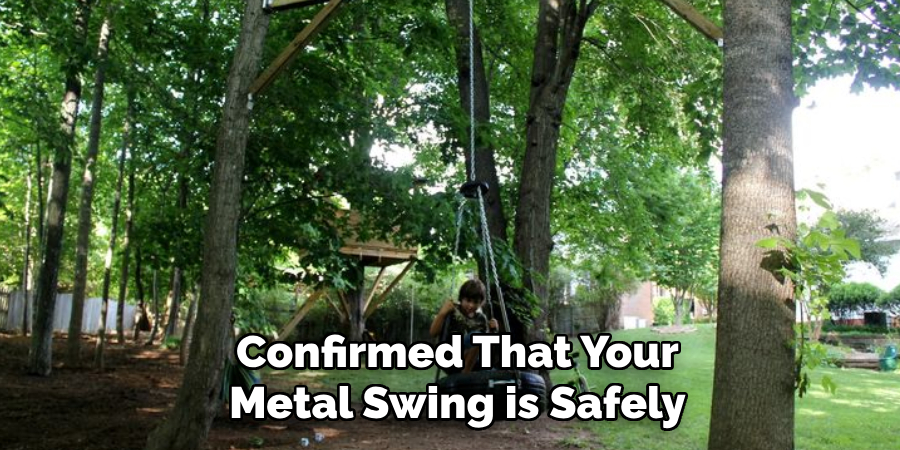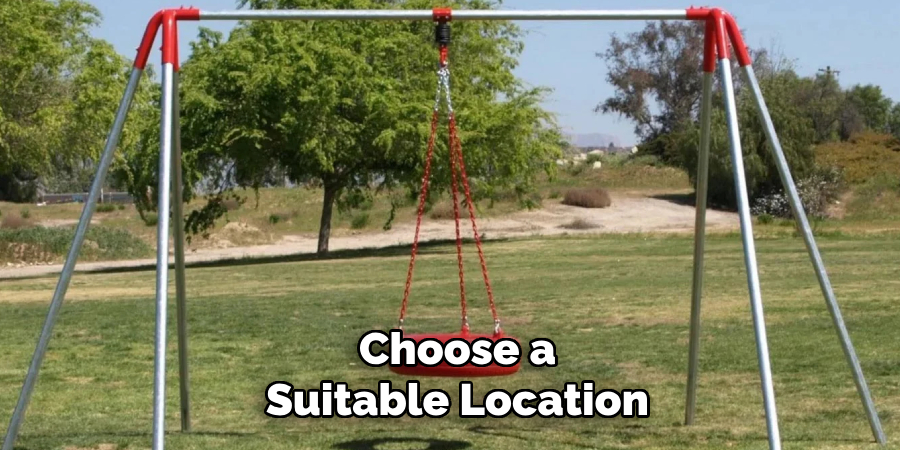Installing a metal swing on a tree is a great way to create a fun and relaxing outdoor space for both kids and adults. With proper planning and the right tools, you can securely attach a swing to a sturdy tree and enjoy countless hours of recreation.

This guide on how to install metal swing on a tree will walk you through the essential steps to safely and efficiently install a metal swing, ensuring the longevity of your setup and the safety of its users.
Why Choose a Metal Swing?
While there are various types of swings available in the market, metal swings are a popular choice due to their durability, strength, and low maintenance. They can withstand harsh weather conditions and heavy use, making them suitable for all ages.
Additionally, metal swings typically come with adjustable chains or ropes, allowing you to easily customize the height of the swing as your child grows.
Moreover, metal swings are relatively easy to install compared to other materials like wood or plastic. They also have a sleek and modern aesthetic that can complement any outdoor space.
Needed Materials
- Metal Swing Set (With All Necessary Parts)
- Rope or Chain
- Ladder
- Drill With Drill Bits
- Adjustable Wrench
- Leveler
8 Step-by-step Guide on How to Install Metal Swing on a Tree
Step 1: Choose a Suitable Tree
The first step to installing a metal swing on a tree is selecting the right tree for the job. Look for a mature, healthy tree with strong, sturdy branches.

Ideally, the tree should be at least 8 inches in diameter to ensure it can support the weight of the swing and its users. Popular tree choices include oak, maple, and sycamore, as these species tend to have robust branches. Avoid trees with visible signs of decay, cracks, or dead branches, as these could compromise the swing’s stability and safety.
Additionally, pick a branch that is at least 6 to 8 feet off the ground and long enough to provide ample clearance for swinging. Ensure there is enough open space around the tree to prevent collisions with other objects or structures.
Step 2: Assemble the Swing Set
Before attaching the swing to the tree, assemble all parts of the metal swing set according to the manufacturer’s instructions. This typically includes connecting the frame, seat, and chains or ropes.
Make sure all bolts are tightly secured and any protective caps or covers are in place to prevent injuries. The stability of the swing set is crucial for its safe operation.
Step 3: Prepare the Branch
Using a ladder, carefully climb up to your selected branch and remove any debris or obstructions around it. Use a leveler to ensure that the branch is not slanted, as this could affect how evenly the swing hangs.
It is also essential to trim any excess branches or twigs that may interfere with the swing’s movement.
Step 4: Measure and Mark
Measure the branch’s circumference and compare it to the length of the chains or ropes on your swing set. This will determine how many times you need to wrap the chains or ropes around the branch for a secure fit. Use a marker to make clear, visible marks on the branch where each chain or rope will be wrapped.

But always remember, do not twist the chains or ropes too tightly around the branch as this could damage both the tree and the swing set.
Step 5: Drill Holes
Using a drill with an appropriate bit size, carefully drill holes into the marked spots on the branch. These holes will act as anchor points for securing the chains or ropes to the tree.
Be sure to align your drill with the natural angle of the branch for a better grip and stability.
Step 6: Wrap Chains or Ropes
After drilling all necessary holes, wrap each chain or rope around the branch according to your measured marks. Make sure they are evenly spaced and not overlapping each other.
Next, thread the end of each chain or rope through its corresponding hole and secure it tightly with a knot.
Step 7: Test for Stability
With all chains or ropes securely attached to the tree, carefully test the swing’s stability by gently pushing on it from different angles. If there is any swaying or movement, tighten the knots or drill additional holes for a more secure fit.
Also, make sure that the swing is hanging at an appropriate height from the ground.
Step 8: Enjoy!
Once you have confirmed that your metal swing is safely and securely installed on the tree, you can now enjoy using it! Make sure to regularly inspect and maintain both the swing set and the tree to ensure their longevity and safety.

Following these steps on how to install metal swing on a tree will help you successfully install a metal swing on a tree and create a fun, safe, and enjoyable outdoor space for all ages. Happy swinging!
Do You Need to Use Professionals?
While installing a metal swing on a tree can be a rewarding DIY project, there are times when seeking professional assistance may be the safer and more efficient choice. If you are unsure about the stability or health of the tree, an arborist can evaluate whether it is suitable for supporting a swing. Arborists can assess risks such as decay, cracks, or weakened branches that may not be immediately visible.
Additionally, if you lack the necessary tools or experience with power equipment like drills and ladders, hiring a professional might be the best option to avoid potential hazards. Professionals are also adept at ensuring the swing is installed at the proper height and angle, reducing the chances of accidents or injury.
For larger or more complex installations, such as swings intended for heavy-duty use, consulting an expert can provide added confidence in the safety and longevity of your setup. While this option may incur additional costs, it is often worth the investment for peace of mind and a reliably secure installation. Consider your own skill level and the specifics of your situation to make the best choice for you and your family.
Additional Tips
- Always have an adult supervise children while using the swing.
- Regularly inspect the chains or ropes for any signs of wear and tear and replace them if necessary.
- Avoid using metal swings on trees with thin, weak branches as this could cause damage to both the tree and the swing set.
- If you are unsure about installing a metal swing on your own, seek professional help. Safety should always be the top priority when it comes to outdoor play equipment.
- Consider using a rubber or foam seat cushion to prevent injuries from accidental falls.
- Remember to remove the swing during harsh weather conditions, such as strong winds and storms, to avoid damage.
By following these tips and steps on how to install metal swing on a tree, you can safely install a metal swing on a tree in your backyard or outdoor space. Now, it’s time to enjoy the fun and excitement of swinging outdoors! Happy swinging!
Frequently Asked Questions
Q1: Can I Install a Metal Swing on Any Type of Tree?
A1: No, it is essential to choose a mature, healthy tree with sturdy branches for the safety and stability of the swing. Avoid trees with decay, cracks, or dead branches.
Q2: How Often Should I Inspect and Maintain My Metal Swing Set?
A2: It is recommended to inspect the swing set at least once a month for any signs of wear and tear. Regular maintenance, such as lubrication and tightening bolts, should be done every 3-6 months.
Q3: Can Adults Use a Metal Swing?
A3: Yes, metal swings are designed to support both children and adults within their weight capacity limit. However, always be cautious and supervise children while they use the swing. The swing should also be inspected for stability before each use.
Q4: Can a Metal Swing Be Removed from the Tree Once Installed?
A4: Yes, it is possible to remove a metal swing from a tree, but it may require some effort and tools. It is recommended to plan ahead and choose a suitable location for your swing before installation. This way, you can avoid the hassle of removing and reinstalling it frequently.

Conclusion
Installing a metal swing on a tree is a rewarding project that enhances your outdoor space and provides endless fun for both children and adults. By following the step-by-step guide on how to install metal swing on a tree carefully and taking proper precautions, you can ensure a safe and long-lasting setup.
Remember to regularly inspect the swing and tree for any signs of wear or damage and perform necessary maintenance to keep everything in optimal condition. With proper care and attention, your metal swing will serve as a joyful addition to your backyard for years to come. Happy swinging!
Edmund Sumlin is a skilled author for Metal Fixes, bringing 6 years of expertise in crafting a wide range of metal fixtures. With a strong background in metalwork, Edmund’s knowledge spans various types of fixtures, from decorative pieces to functional hardware, blending precision with creativity. His passion for metalworking and design has made him a trusted resource in the industry.
Professional Focus:
- Expert in Metal Fixtures : Edmund aesthetic specializes in creating durable and innovative metal fixtures, offering both appeal and functionality. His work reflects a deep understanding of metalworking techniques and materials.
- Sustainability Advocate : He is dedicated to using sustainable practices, ensuring that every fixture is crafted with eco-friendly methods while maintaining high-quality standards.
In his writing for Metal Fixes, Edmund provides valuable insights into the latest trends, techniques, and practical advice for those passionate about metal fixtures, whether they are professionals or DIY enthusiasts. His focus on combining artistry with engineering helps others discover the true potential of metal in design.


